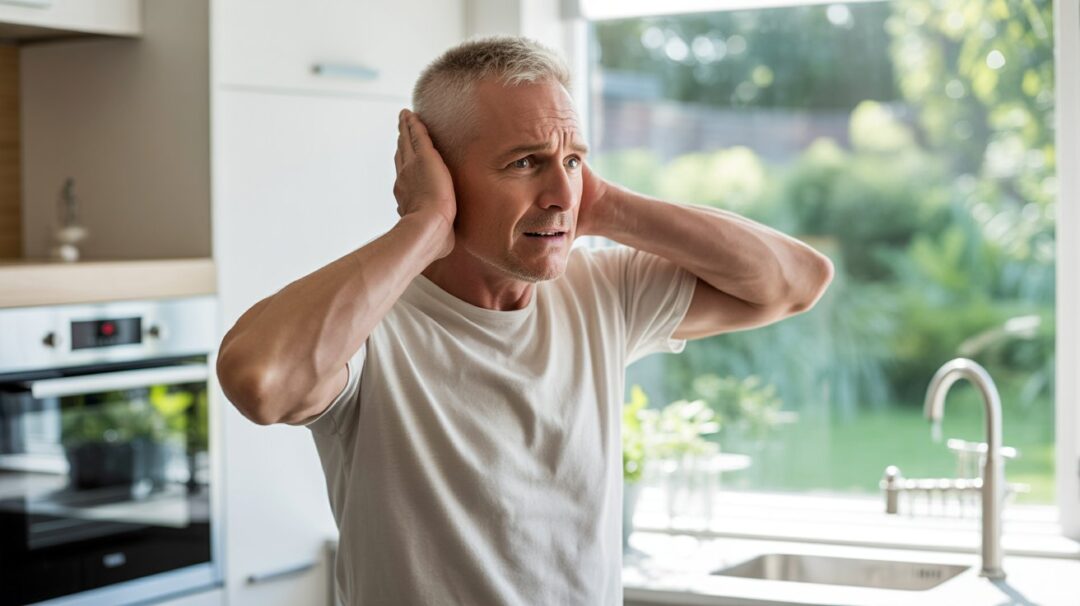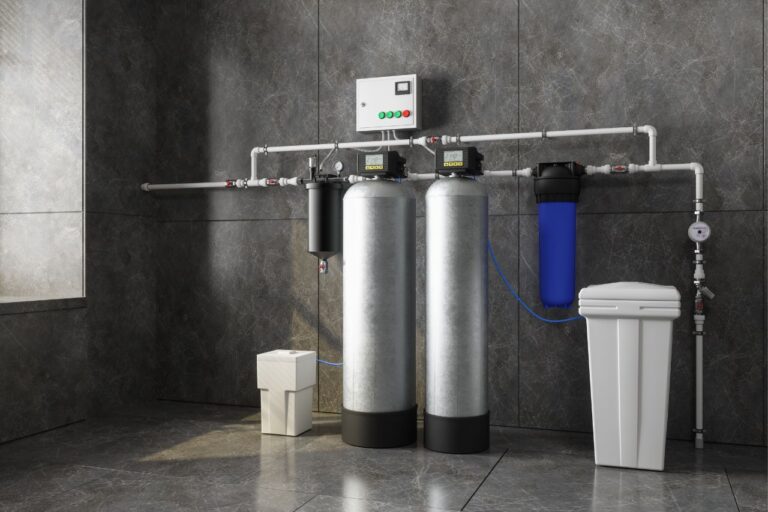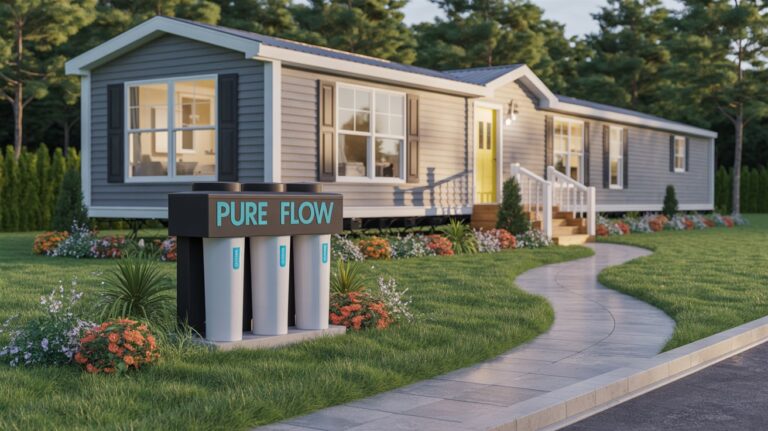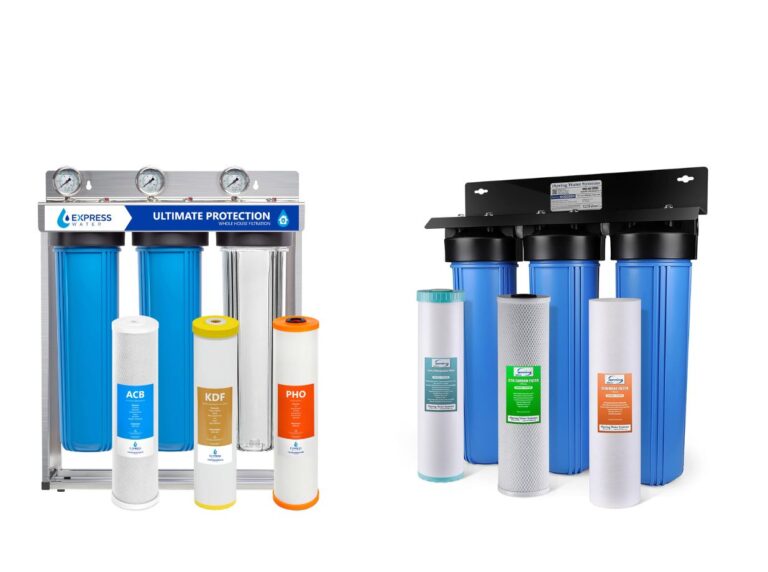10 Signs Your Home Water System Needs Maintenance
Are you aware of the hidden dangers lurking in your home’s water system? Neglecting water system maintenance can lead to costly repairs, unexpected breakdowns, or even water damage.
Maintaining your home water system is crucial for the health and safety of your family. A well-maintained system ensures clean water and prevents potential hazards.
A home water system maintenance checklist can help you stay on track. By being aware of the signs that indicate the need for maintenance, you can take proactive steps to avoid costly issues.
Key Takeaways
- Regular maintenance is crucial for a healthy water system.
- Neglecting maintenance can lead to costly repairs.
- A maintenance checklist helps in staying proactive.
- Clean water is essential for family health.
- Early detection of issues prevents major problems.
The Vital Role of Your Home Water System
Your home’s water system plays a vital role in your daily life, making its maintenance essential. It encompasses various components that work together to provide clean water for drinking, cooking, and hygiene.
Components of a Typical Home Water System
A typical home water system includes several key components: the water heater, pipes, faucets, and appliances that use water. The water heater is responsible for heating water to a suitable temperature for household use. Pipes distribute water throughout the home, while faucets and appliances (like dishwashers and washing machines) utilize this water for various tasks.
| Component | Function | Common Issues |
|---|---|---|
| Water Heater | Heats water for household use | Leaks, corrosion, inadequate heating |
| Pipes | Distributes water throughout the home | Leaks, corrosion, clogs |
| Faucets | Provides access to water for household use | Leaks, worn-out parts |
Why Regular Maintenance Matters
Regular maintenance is crucial to prevent issues like leaks, corrosion, and scale buildup. Neglecting maintenance can lead to reduced efficiency, increased energy bills, and potentially costly repairs. By regularly inspecting and maintaining your home’s water system, you can identify potential problems early and take corrective action.
Routine maintenance tasks may include checking for leaks, inspecting the water heater, and cleaning or replacing filters. By staying on top of these tasks, you can ensure your water system operates smoothly and efficiently.
10 Signs Your Home Water System Needs Maintenance
Recognizing the signs that your home water system needs maintenance can save you from costly repairs. Your home’s water system is a vital component that requires attention to function properly. Regular maintenance is key to preventing issues that can lead to significant problems if left unchecked.
The Importance of Early Detection
Early detection of water system issues is crucial for preventing minor problems from becoming major repairs. Signs like discolored water, unusual noises, and increased water bills can indicate potential issues within the system. By identifying these signs early, homeowners can take proactive steps to address problems before they escalate.
“The key to maintaining a healthy water system is vigilance and regular maintenance.”
Financial Impact of Neglected Water Systems
Neglecting your home’s water system can have significant financial implications. Unaddressed issues can lead to costly repairs, replacements, and even water damage to your home. A well-maintained system, on the other hand, can save homeowners money in the long run by reducing the need for major repairs and improving overall efficiency.
Sign #1: Discolored or Cloudy Water
Discolored or cloudy water is not just aesthetically unpleasing; it can signal potential problems within your home’s water system that require immediate attention. When you notice a change in the color or clarity of your water, it’s essential to investigate the cause.
Common Causes of Water Discoloration
Several factors can contribute to discolored or cloudy water. Some of the most common causes include:
- Sediment or rust within the water pipes, often resulting from corroded or aging infrastructure.
- Bacterial growth or other microbial contamination, which can occur due to improper water treatment or stagnation.
- Mineral deposits, particularly in areas with hard water, can cause cloudiness or discoloration.
Understanding these causes is crucial for determining the appropriate course of action.
When Discoloration Indicates Serious Problems
While some instances of discolored water may be harmless and temporary, persistent or severe cases can indicate more serious issues, such as contamination or significant pipe deterioration. If you notice that your water remains discolored over time or is accompanied by other symptoms like unusual odors or tastes, it’s vital to take further action.
Testing Your Water Quality at Home
You can perform some basic tests at home to assess your water quality. Simple methods include:
- Letting the water run for a few minutes to see if the discoloration clears.
- Using a water testing kit to check for common contaminants.
Professional Water Testing Options
For a more comprehensive analysis, consider hiring a professional to test your water. They can identify a wide range of potential issues, from bacterial contamination to heavy metal presence.
Professional testing can provide peace of mind and help you address any underlying problems with your water system.
Sign #2: Unusual Tastes or Odors in Your Water
Unusual tastes or odors in your drinking water are not just unpleasant; they can indicate serious problems with your water system. Detecting these changes early is crucial for maintaining water quality and ensuring the health of your household.
Identifying Common Water Taste and Odor Issues
Unusual tastes and odors can stem from various sources, including contamination, decaying organic matter, or chemical reactions within the water system. Common issues include chlorine, sulfur, or metallic tastes, which can be due to the water treatment process, natural occurrences, or corrosion within the pipes.
Health Concerns Associated with Taste/Odor Changes
While some tastes and odors may be harmless, others can indicate the presence of harmful contaminants. For instance, a metallic taste could suggest corrosion of pipes, potentially leaching harmful metals into the water. It’s essential to investigate the cause of any unusual taste or odor to ensure your water is safe to drink.
Chlorine, Sulfur, and Metallic Tastes Explained
Chlorine tastes are often a result of water treatment processes. Sulfur smells, reminiscent of rotten eggs, can occur due to bacteria in the water or soil surrounding your water source. Metallic tastes can be attributed to corroded pipes or high levels of minerals like iron or manganese.
When to Consider Water Treatment Solutions
If you notice persistent or severe taste and odor issues, it may be time to consider a water treatment solution. Options range from activated carbon filters to reverse osmosis systems, depending on the specific contaminants present. Consulting with a water quality expert can help determine the most appropriate solution for your home.
Sign #3: Reduced Water Pressure
Low water pressure can be a frustrating issue, disrupting daily activities and indicating potential problems with your home water system. It’s a common issue that many homeowners face, and understanding its causes is crucial for effective resolution.
Potential Causes of Low Water Pressure
Low water pressure can result from various factors, including mineral buildup in pipes, leaks, or issues with the municipal water supply. Mineral buildup, particularly in areas with hard water, can narrow the passageway for water, reducing pressure. Leaks, on the other hand, can divert water, leading to decreased pressure throughout the system.
Diagnosing Pressure Issues Throughout Your Home
Diagnosing the cause of low water pressure involves checking various parts of your plumbing system. Start by identifying if the issue is localized to one fixture or affects the entire house.
Simple Pressure Tests You Can Perform
One simple test is to check the water pressure at different fixtures. If the pressure is low everywhere, it could indicate a more systemic issue. You can also check your home’s water meter to detect any hidden leaks.
- Turn off all water-using appliances and fixtures.
- Check the water meter. If it’s still moving, you likely have a leak.
- Inspect visible pipes for signs of moisture or corrosion.
When to Call a Professional Plumber
If you’re unable to identify the cause or if the issue persists after simple checks, it’s time to call a professional plumber. They can use specialized equipment to detect leaks and assess water pressure throughout your home. As a plumber once said,
“A small leak can sink a big ship, and similarly, a small issue with your water system can lead to significant problems if not addressed promptly.”
Maintaining your home water system is crucial to preventing issues like reduced water pressure. Regular checks and timely maintenance can save you from more significant problems down the line.
Sign #4: Unusual Noises in Your Plumbing System
Unusual noises emanating from your plumbing system can be more than just a nuisance; they often signal underlying issues that require attention. These sounds can range from banging and clanking to whistling and gurgling, each potentially indicating different problems within your water system.
Decoding Different Plumbing Sounds
Different noises can signify various issues. For instance, banging or clanking sounds might indicate loose pipes or water hammer, a condition that occurs when there’s a sudden stop in water flow. Whistling noises could be a sign of high water pressure or a faulty valve. Gurgling sounds often suggest air in the lines or a blockage.

When Noises Indicate Serious Problems
While some noises might be harmless, others can signal serious issues. For example, persistent banging or clanking could lead to pipe damage if not addressed. Whistling or screeching sounds might indicate that your water pressure is too high, potentially leading to leaks or bursts. Gurgling sounds, especially if accompanied by slow drains, could signify a more significant blockage or venting issue.
Banging, Whistling, and Gurgling Explained
Banging noises are often related to the sudden closure of valves, causing a shockwave through the pipes. Whistling can be due to restricted water flow, while gurgling is typically a sign of air trapped in the system or a drainage issue.
Addressing Water Hammer and Air in Lines
To address water hammer, you can install water hammer arrestors or adjust your system’s pressure. For air in the lines, bleeding the system or checking for leaks can resolve the issue. Regular maintenance can help prevent these problems from arising.
Sign #5: Inconsistent Water Temperature
One of the key indicators that your home water system needs maintenance is inconsistent water temperature. This issue can manifest as sudden changes in water temperature while showering or running appliances that use water.
Water Heater Issues vs. Distribution Problems
Inconsistent water temperature can stem from either issues with the water heater or problems within the distribution system. Water heater issues might include a malfunctioning thermostat or a buildup of sediment inside the tank, which can affect its ability to heat water consistently.
On the other hand, distribution problems could involve issues like faulty mixing valves or improper pipe sizing, leading to fluctuations in water temperature at the point of use.
Troubleshooting Temperature Fluctuations
To address inconsistent water temperature, start by checking the water heater’s thermostat setting. Ensure it’s set correctly and not causing the heater to malfunction.
Water Heater Maintenance Basics
Regular maintenance of your water heater is crucial. This includes flushing the tank annually to remove sediment and checking the anode rod for corrosion.
Checking Mixing Valves and Thermostats
Mixing valves blend hot and cold water to a safe temperature. If these valves are faulty, they can cause temperature fluctuations. Similarly, a malfunctioning thermostat in your water heater can lead to inconsistent heating.
Sign #6: Visible Leaks or Moisture
Visible leaks or moisture around your home’s water system can be a clear indicator of underlying issues that need immediate attention. These signs not only indicate potential problems with your water system but also pose risks of water damage and mold growth if left unaddressed.
Common Leak Locations and Their Causes
Leaks often occur in areas where pipes are connected or where there’s corrosion. Common locations include under sinks, around water heaters, and near appliances that use water. Understanding the causes, such as loose connections, corrosion, or high water pressure, can help in diagnosing and fixing the issue.
| Location | Common Cause | Action |
|---|---|---|
| Under Sinks | Loose connections | Tighten connections |
| Around Water Heaters | Corrosion | Inspect and replace corroded parts |
| Near Appliances | High water pressure | Install a pressure regulator |
Detecting Hidden Leaks Before They Cause Damage
Not all leaks are visible. Some can be hidden behind walls or under floors, making them harder to detect. Using the right tools and techniques is crucial for identifying these leaks before they cause significant damage.
Using Moisture Meters and Leak Detection Tools
Moisture meters can detect abnormal moisture levels in walls and floors, indicating potential leaks. Leak detection tools, including acoustic sensors, can help locate leaks without causing unnecessary damage to your property.
Emergency Shut-off Procedures
In the event of a significant leak, knowing how to shut off your water supply quickly can prevent extensive damage. Locate your main shut-off valve and ensure all household members know how to use it.

Sign #7: Increasing Water Bills
An unexplained rise in your water bill is often one of the first signs that your water system requires attention. Monitoring your water consumption and understanding the factors that contribute to your water bill can help you identify potential issues early on.
How to Analyze Your Water Usage Patterns
To effectively analyze your water usage, start by reviewing your past water bills to identify any unusual patterns or spikes in consumption. This can help you pinpoint when the issue began and potentially what might be causing it.
- Check for seasonal variations in water usage.
- Compare your usage with similar periods in previous years.
- Look for any changes in your household or water-using appliances.
Identifying Wasteful Water System Issues
Wasteful water system issues can lead to significant increases in your water bill. Common problems include leaks, inefficient appliances, and outdated fixtures.
Tracking Water Consumption Effectively
To track your water consumption effectively, consider installing a smart water meter. This can provide real-time data on your water usage, helping you identify leaks or other issues promptly.
Common Culprits Behind Sudden Bill Increases
Sudden increases in your water bill can often be attributed to hidden leaks, malfunctioning appliances, or changes in water pressure. Regular maintenance and inspections can help identify these issues before they become major problems.
- Leaks in pipes or fixtures.
- Running toilets or faucets.
- Irrigation system malfunctions.
By understanding your water usage patterns and addressing potential issues promptly, you can avoid unnecessary waste and keep your water bills under control. Regular water system maintenance is key to ensuring the efficiency and longevity of your home’s water system.
Sign #8: Sediment Buildup or Mineral Deposits
Sediment buildup or mineral deposits in your home water system can lead to a range of issues that affect both the quality of your water and the longevity of your plumbing fixtures. These deposits often result from hard water, which contains high levels of minerals such as calcium and magnesium.
Signs of Hard Water and Scale Formation
Hard water can cause scale formation, a hard, crusty deposit that builds up inside pipes, water heaters, and appliances. Common signs include white or off-colored stains on fixtures, reduced water flow, and increased energy bills due to decreased appliance efficiency.
Long-term Effects on Appliances and Fixtures
The long-term effects of sediment buildup and mineral deposits can be detrimental to your home’s appliances and fixtures. Appliances such as water heaters, dishwashers, and coffee makers can suffer from reduced efficiency and lifespan. Fixtures like faucets and toilets can also be affected, leading to costly repairs or replacements.
Testing Water Hardness Levels
To determine if you have hard water, you can test its hardness level. This can be done using a water testing kit or by hiring a professional to assess your water quality. Understanding your water’s hardness level is crucial for deciding the best course of action.
Water Softening and Filtration Options
There are several solutions to address hard water and mineral deposits. Water softening systems can remove calcium and magnesium ions, replacing them with sodium or potassium ions. Filtration systems can also be effective, especially when combined with a water softener. The choice between these options depends on your specific needs and the severity of your water hardness.
| Solution | Description | Benefits |
|---|---|---|
| Water Softening Systems | Remove calcium and magnesium ions | Reduces scale formation, improves appliance efficiency |
| Filtration Systems | Remove impurities and minerals | Improves water quality, reduces maintenance needs |
| Combination Systems | Combine softening and filtration | Comprehensive solution for hard water and impurities |

Sign #9: Slow Draining Fixtures
Slow-draining fixtures can be more than just a minor inconvenience; they often signal underlying issues in your home’s water system. Whether it’s a sink, toilet, or shower, when water takes longer than usual to drain, it indicates a potential problem that needs attention.
Distinguishing Between Local and System-Wide Drainage Issues
It’s crucial to determine whether the slow drainage is localized to one fixture or affects multiple areas of your home. Local issues might be caused by blockages or buildup within a specific drain, whereas system-wide problems could indicate a more significant issue with your plumbing system.
To diagnose the issue, check if more than one fixture is affected. If so, it may suggest a broader problem that requires professional attention.
Preventative Maintenance for Drain Systems
Regular maintenance can prevent many drainage issues. This includes being mindful of what you put down your drains and periodically cleaning them.
Safe DIY Drain Cleaning Methods
For minor clogs, DIY methods can be effective. Using a mixture of baking soda and vinegar followed by hot water can help clear buildup without damaging your pipes.
- Pour 1/2 cup of baking soda down the drain.
- Follow with 1/2 cup of vinegar.
- Let it sit for a few hours before rinsing with hot water.
When to Address Sewer Line Problems
If you notice multiple fixtures are draining slowly or there are signs of sewage backup, it may indicate a sewer line issue. In such cases, it’s essential to consult a professional plumber to assess and repair the problem.
| Issue | Symptoms | Action |
|---|---|---|
| Local Drainage Issue | Slow draining in one fixture | Try DIY cleaning methods |
| System-Wide Issue | Multiple fixtures draining slowly | Consult a professional plumber |
| Sewer Line Problem | Sewage backup, multiple slow drains | Call a professional plumber immediately |
Sign #10: Aging System Components
Recognizing when your water system’s components are nearing the end of their lifespan is vital for maintaining the overall health of your plumbing.
Typical Lifespan of Water System Parts
Different components of your water system have varying lifespans. For instance, water heaters typically last between 8 to 12 years, while pipes can last anywhere from 20 to 50 years or more, depending on the material.
Understanding these lifespans is crucial for anticipating when replacements might be necessary.
Planning for Timely Replacements
Proactive planning can help minimize disruptions and costs associated with replacing aging components.
Creating a Component Inventory and Replacement Schedule
Start by making an inventory of your water system’s components, noting their age and expected lifespan. This allows you to create a schedule for future replacements.
Budgeting for Water System Upgrades
Once you have a replacement schedule, you can begin budgeting for these future expenses. Consider setting aside funds annually to cover the costs of replacements and upgrades.
By being proactive, you can ensure that your water system continues to operate efficiently and effectively.
Conclusion: Protecting Your Home’s Water System
Maintaining your home’s water system is crucial for its longevity and efficiency. Throughout this article, we’ve explored the 10 signs that indicate your home water system needs maintenance, from discolored water to aging system components.
Being aware of these signs allows homeowners to take proactive steps, addressing issues before they become major problems. Regular water system maintenance is essential to prevent costly repairs, ensure water quality, and maintain the overall health of your plumbing system.
By understanding the importance of maintenance and recognizing the signs that indicate the need for it, you can protect your home’s water system and enjoy a safe, reliable, and efficient water supply. Implementing a regular maintenance routine is a simple yet effective way to safeguard your home and family.






